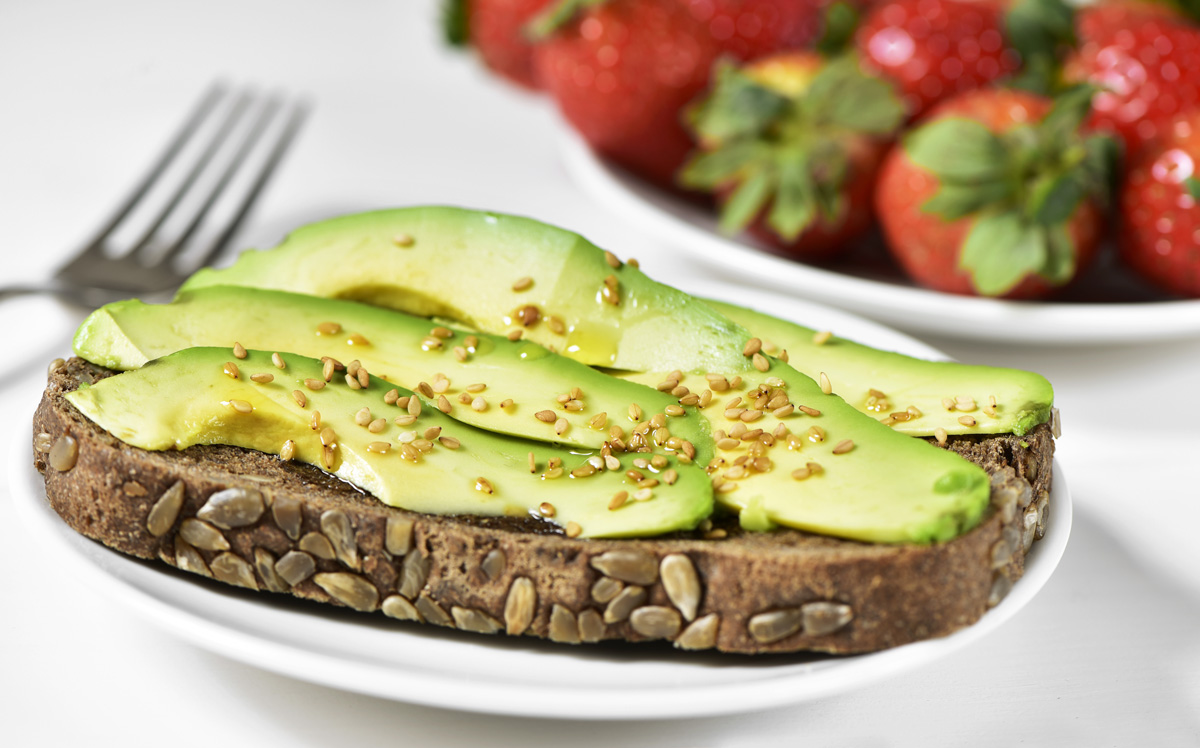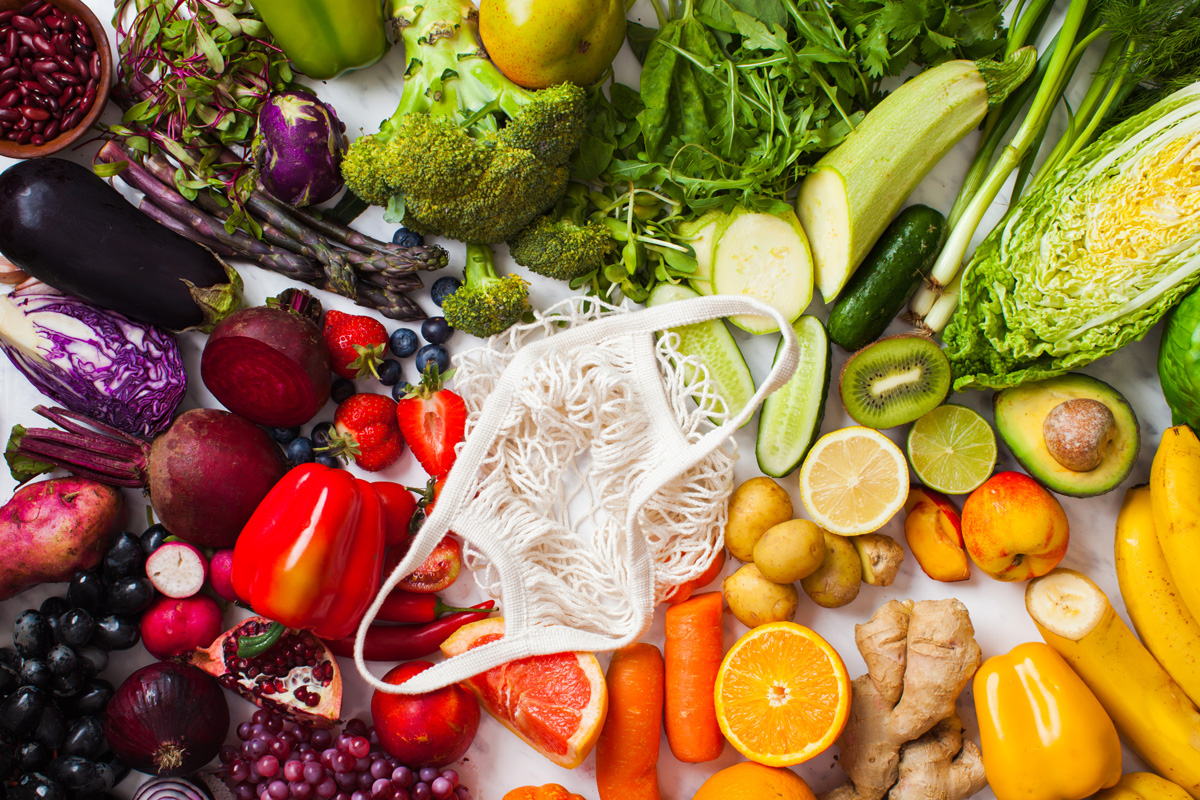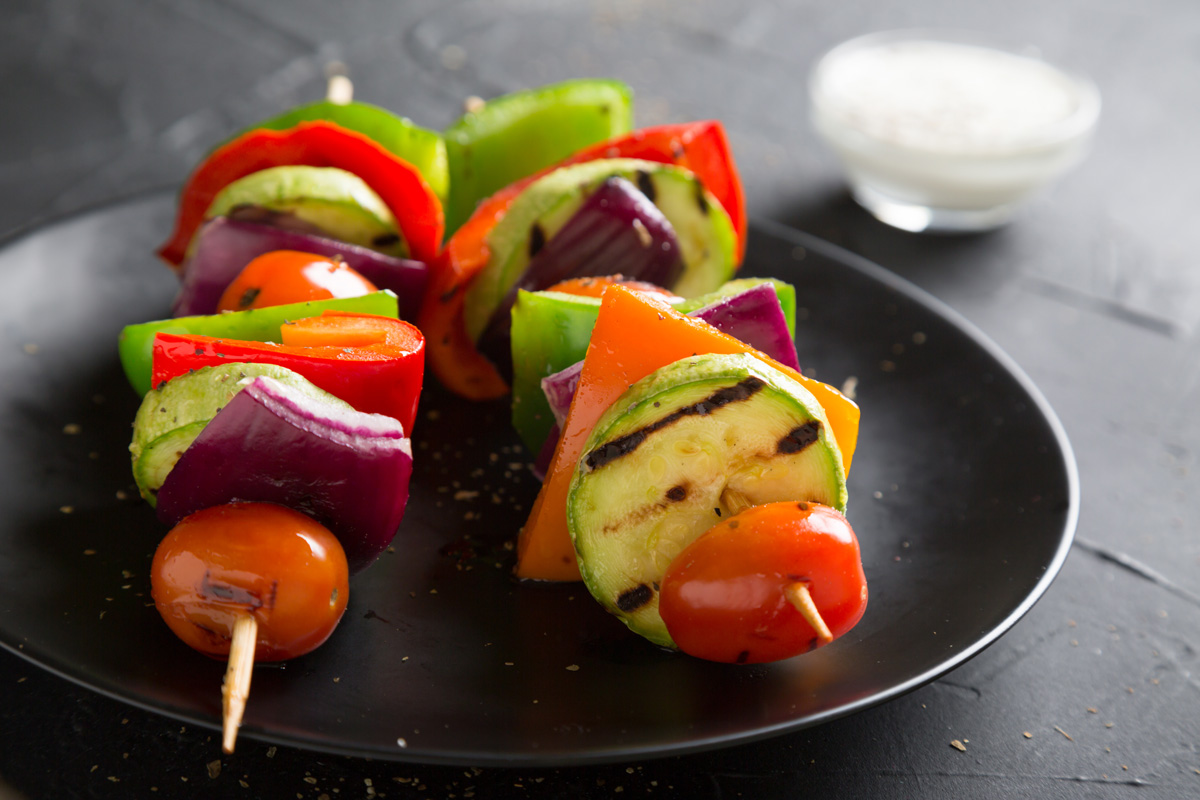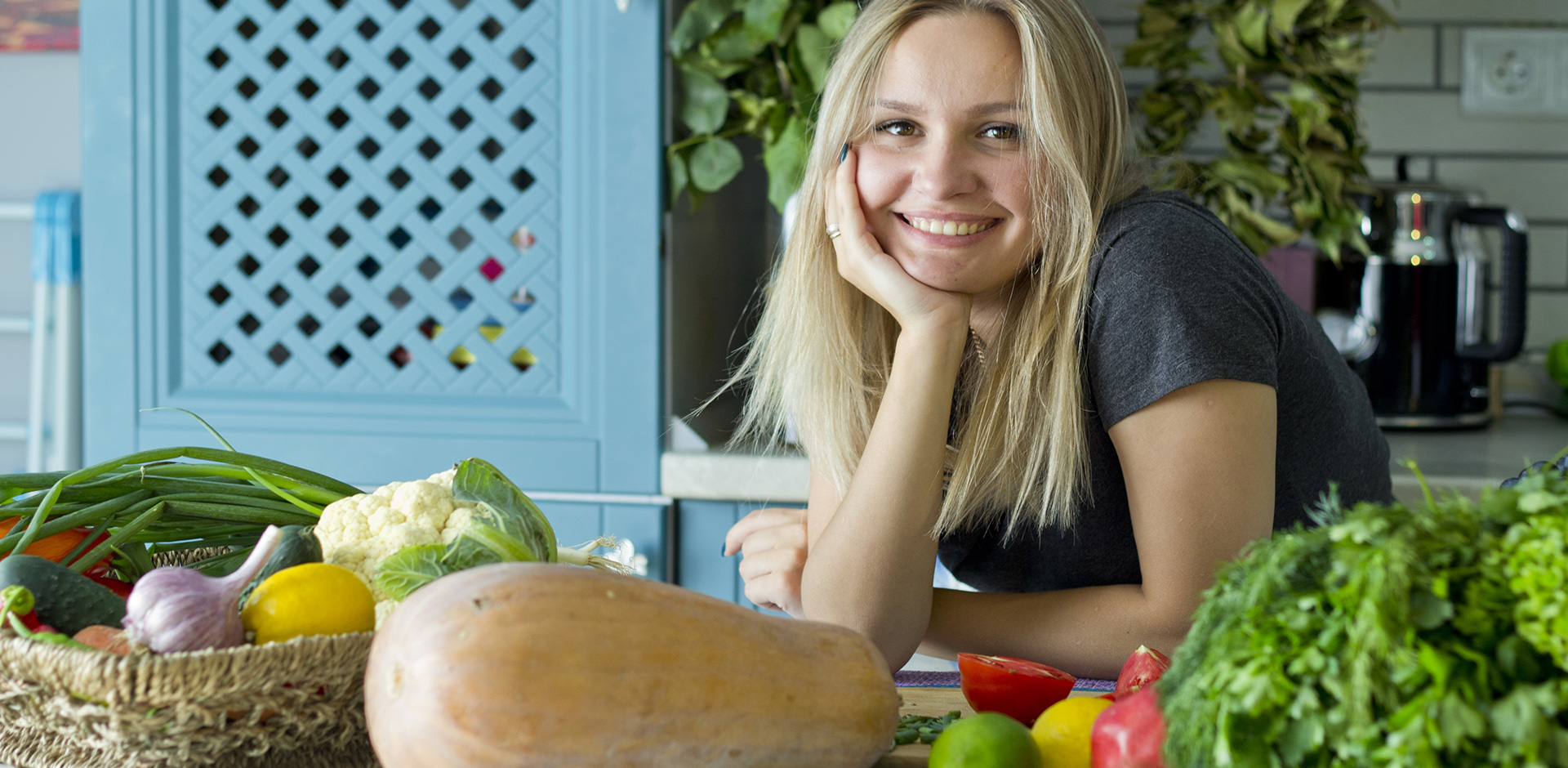The vegan diet has become more and more popular these days. However, this is still a controversial topic, which is why a lot of myths appeared in this matter. The following article presents the main assumptions of this model of nutrition, and also explains what to pay attention to in order to properly balance it.
Veganism - how to understand it?

Veganism is a strict plant diet based only on products of plant origin. It is defined as a diet that does not contain meat, fish or seafood or products containing them. This also applies to other products of animal origin, in particular those derived from slaughter, such as lard or gelatin. It also excludes the consumption of milk and milk products, eggs and bee honey. There are many reasons for choosing this model of nutrition, from health, ethical to religious. Studies in vegan populations show that this diet can be effective in preventing coronary heart disease, diabetes, obesity, and hypertension. Numerous observations show that vegans live longer than people who regularly eat meat and meat products. People on vegetarian diets usually provide fewer calories from food than people on traditional diets. The main reason for this dependence is the low energy density (low amount of kcal per 100g) and satiating properties (including large volume and amount of fiber) of many plant products, such as vegetables, fruits and pods. Studies show that people choosing vegan diets are also more aware, they care more about nutrition, physical activity and their health. However, regardless of the type of diet used, if it is poorly balanced, food deficiencies and weakening of the body's functioning often occur. Therefore, only the right selection of food products allows you to enjoy health benefits from a properly composed plant diet.
Vegan shopping cart
Below is a short guide to vegan shopping. Every day we should consume products from each of these groups.
• Whole grain products
They form the basis of a well-balanced plant diet. They are a source of necessary complex carbohydrates, provide proteins and B vitamins. Depending on the product, they are also rich in mineral salts such as magnesium, iron and zinc. Try to give up white bread, white noodles and rice. Replace them with whole grain products: whole meal pasta, whole meal or multigrain bread, brown rice, porridge.
• Vegetables
They are an excellent source of vitamins, mineral salts and antioxidants. Buy fresh, seasonal vegetables but don't be afraid of frozen food. Thanks to the low temperature, vegetables retain all their minerals. Choose single vegetables or multi-vegetable frozen foods. The more vegetable colors the better. Vegetables can be eaten for breakfast, lunch, dinner as well as between meals. We keep the most nutrients by steaming or eating them raw. It is especially worth paying attention to green vegetables like lettuce, cabbage, broccoli, kale. Green vegetables can be eaten without restrictions, while those that have a higher amount of carbohydrates such as starch, e.g. potato or legumes, eat in moderate amounts (we include them in the caloric balance). Use parsley as an addition to dinners and salads. It is a source of many vitamins, and vitamin C contained in it supports the absorption of vegetable iron.
• Legumes
They are one of the basic sources of protein in the plant diet. The most common question for vegans is "Where do you get your protein from?" Vegetable protein can meet the nutritional requirements when consuming a variety of plant products and sufficient energy supply. Studies show that the consumption of diverse plant products throughout the day provides all the essential amino acids. Mainly we find them in legumes, as well as cereals, nuts and seeds. Along with the diet, therefore, you should consume exogenous amino acids, i.e. those that the body does not produce itself, and they are dispersed in various plant products, which is why we must learn to combine them properly. Combining legumes with cereals during the day, we simultaneously provide a set of exogenous amino acids. In practice, it makes no difference to our body to eat such overlapping defective proteins instead of full-value animal proteins. The combination of legumes and cereals gives the quality of protein in the diet equal to the quality of protein in animal products. The richness of legumes is surprising. Only beans have several dozen varieties, of different size, color and taste. There are also different varieties of lentils and peas. You can also try soy, chickpeas or broad beans. Added to this is a whole range of fermented soy products like tofu or soy milk. If you do not like legumes in a natural form try to make pates from them.
• Fruits
They are an excellent source of carbohydrates and vitamins. They are also a rich source of antioxidants. We avoid canned fruit and fruit juices, which contain huge amounts of sugar or artificial sweeteners. Try to consume no more than 2 servings of fruit daily. Fruit works great as an accompaniment to breakfast, whether in the form of muesli or a sliced fruit salad with the addition of nuts. Fruits are also a great addition to shakes and desserts. In low season, you can safely reach for frozen fruit. In season we use fresh products. It is also worth trying dried fruit. They give meals a natural sweetness, without the need for empty calories from sugar.
• Nuts and stones
Above all, they are a source of high-quality fatty acids, protein and microelements such as zinc, iron and magnesium. There are more and more varieties of nuts available in stores. It is important to choose unprocessed ones with a natural taste. Try incredibly filling and selenium-rich Brazil nuts. Walnuts and ground linseed are an excellent source of omega-3 fatty acids. Salted peanuts, or nuts in chocolate or caramel will provide only additional, unnecessary calories, sugar and fat. Complete your diet with sesame seeds, poppy seeds and linseeds.
• Vegetable oils
It is worth separating oils that can be used for frying. Coconut oil or olive oil are great for heat treatment. The rest of the available should be consumed raw, such as linseed oil, black cumin, avocado - they are a great addition to salads.
First shopping

We are accustomed to reaching for products we have already tested, not paying attention to the remaining range. Therefore, changing your diet may initially cause problems during the first few purchases. However, unprocessed plant food can easily be found in every major store, shop and bazaar. Spend a little more time on your first shopping and read the composition of the product you are reaching for. Sometimes, to diversify the diet and taste sensations, it is worth reaching for additional food products and ready-made meals, thanks to which we avoid spending time preparing meals when we are busy. If you fancy vegan bars, chips, sweet snacks or you don't have time to prepare home-made plant pates, you can take advantage of the ever richer store offer. It is important that if you care about health, do it in moderation.
What deficiencies occur in a vegan diet?
Vegan diets are characterized by a lower content of saturated fat and cholesterol, higher levels of fiber, magnesium, potassium, vitamin C and E, folic acid, carotenoids, and flavonoids. However, vegans according to research may not provide adequate dietary intake of vitamin B12, iron, calcium, vitamin D, zinc, iodine and long-chain Omega-3 fatty acids. The basic supplementation is vitamin B12, vitamin D. There are no vegetable sources of vitamin B12; it can only be supplied from animal foods such as eggs, dairy products and meat. Vitamin D level depends on exposure to sunlight. The extent of its production in the skin is very diverse and depends on many factors, including the time of day, season, latitude, skin pigmentation, use of sunscreen and age. Vegans do not differ in this respect from people on a traditional diet in both cases, supplementation is necessary for everyone. The rest of the potential deficiencies we can cover by using a balanced diet and appropriate treatments to increase the absorption of nutrients in the diet:
• thermal treatment,
• soaking - used in the case of dry seeds of legumes, nuts and seeds allows you to wash out or eliminate the effects of most anti-nutritional substances,
• germination, fermentation, ensiling - during which the most nutrients become more bioavailable.
Basic recommendations
1. Every day, try to eat 1 cup of green leafy vegetables (kale / spinach / parsley) with your meals.
2. Eat 3-4 meals a day.
3. Try to include in your meals:
a. whole grain products (groats, cereals, rice, bread or pasta),
b. legumes or preparations with legumes,
c. minimum 1 tablespoon of nuts or seeds / fat such as olive oil, evening primrose oil.
4. Half of each meal should be vegetables (fruit 1-2 servings during the day).
5. Choose bottled highly mineralized water. 6. Try to avoid processed foods.
Summary

Well-planned vegan diets are suitable for people at all stages of life, including pregnancy and lactation, infancy, childhood, adolescence, and athletes. A well-balanced plant diet with personalization of diet and supplementation should not be associated with the risk of deficiencies, and the growing number of supporters of such a model of nutrition in athletes is a perfect example.





